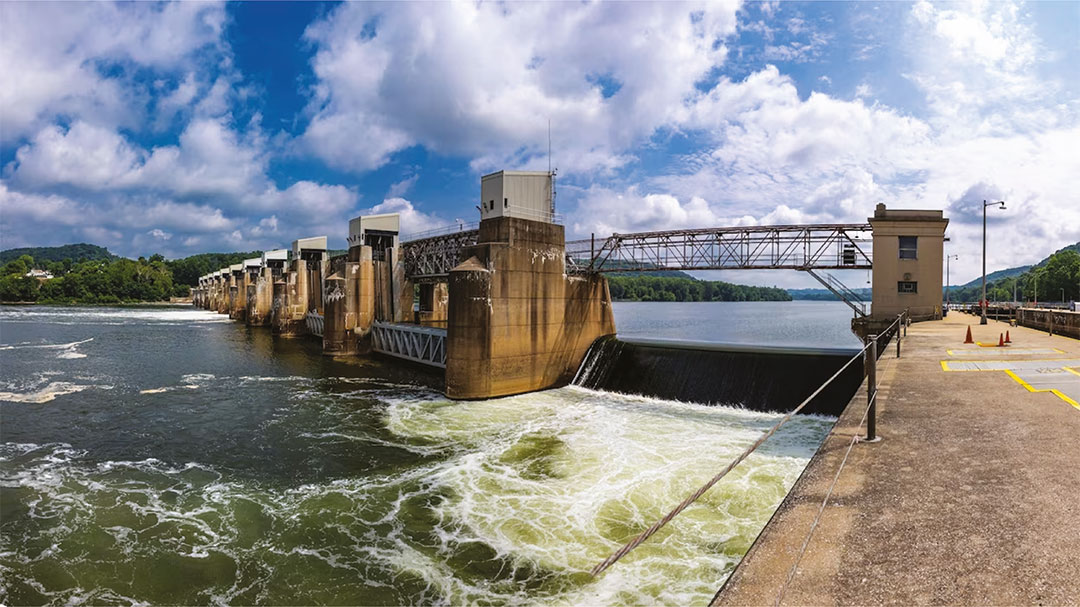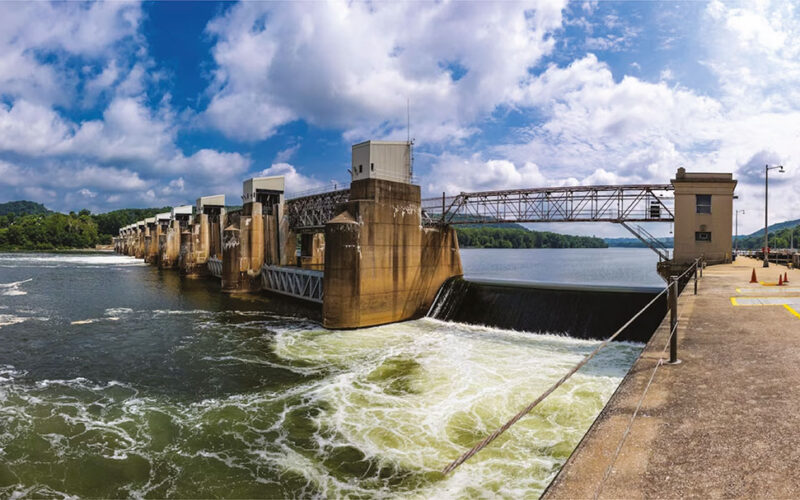
Setting the stage for updating the Ohio River’s oldest navigation system, the U.S. Army Corps of Engineers’ Pittsburgh District has broken ground at the Montgomery Locks and Dam to officially mark the start of a construction of the Upper Ohio Navigation Project.
The multi-billion-dollar construction project will replace locks at the Emsworth, Dashields, and Montgomery locks and dams – the first three on the Ohio River downstream from Pittsburgh, Pa. The project will replace the auxiliary chambers, measuring 56 feet wide by 360 feet long, with locks measuring 110 feet wide by 600 feet long.
The average age of the three Upper Ohio facilities is 96 years old, with aging conditions that could lead to major navigation shutdowns. The auxiliary chambers at the three facilities are the smallest on the Ohio River, causing bottlenecks and slowdowns during maintenance periods, and proving too small for today’s commercial barges.
Montgomery is part of the Upper Ohio navigation system, which sees 15 to 20 million tons of materials pass through its river chambers annually.
Overall, the Pittsburgh District operates 23 locks and dams on the Ohio, Monongahela, and Allegheny rivers, saving shippers and consumers approximately $4 billion in transportation costs compared to using other means such as trucks or rail. The USACOE started constructing Montgomery Locks and Dam in 1932 and finished four years later.
The auxiliary lock has reached the end of its operational lifespan and is experiencing structural aging.
“What makes this project critical is the potential for structural failure of the lock walls, which would cause major interruption to river transportation,” said Chris Dening, the project manager for the construction of the Upper Ohio project.
“Many of the walls have significant cracking along and across their lengths. We have observed leaking within the lock walls during operation, which confirmed the seriousness of the situation,” he said, adding that if one of the lock walls failed, it would impact operations for several months with an unexpected failure causing shippers to scramble to find new ways to reroute shipments.
“The upgrades we are making at Montgomery Locks and Dam are just the first of three major investments to modernize the upper Ohio River navigation system,” said Steve Fritz, Mega Project program manager for the Pittsburgh District. “We are building larger, newer, better locks that will provide a resilient navigation system in the Pittsburgh region for the next 100 years.”
Pending completion of the project, the Pittsburgh District has taken several measures to address structural issues to avoid sudden failures. Pittsburgh’s engineers increased the frequency of their inspections at Montgomery and developed contingency plans for any potential emergency.

